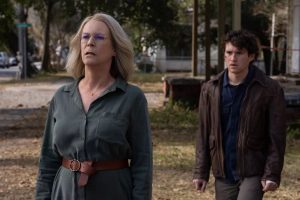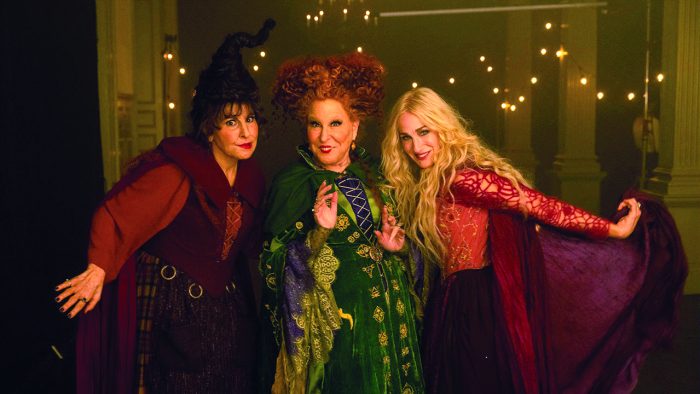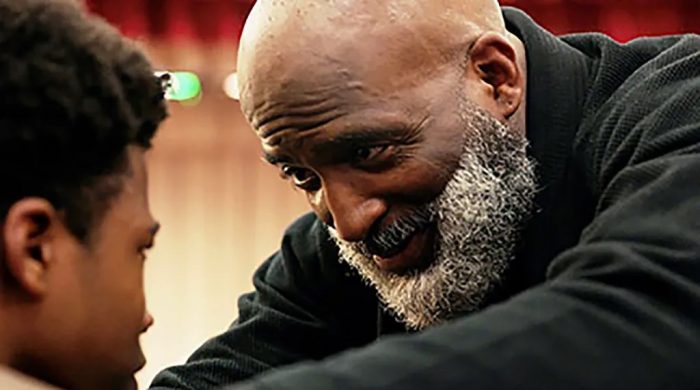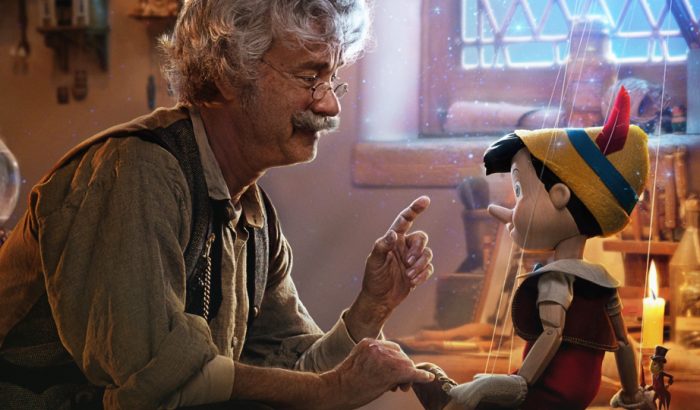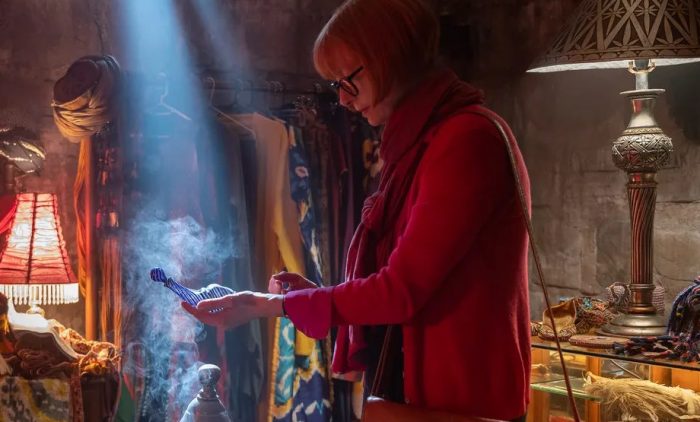Reviewed by Jeffrey Sanzel
Retitled from the French Sans Filtre (Without Filter), Swedish filmmaker Ruben Östlund makes his English language feature film debut with Triangle of Sadness. With films such as Force Majeure (2014) and The Square (2017), Östlund adds to his dozen films with this dark comedy that eviscerates wealth and class.
The film follows model Carl (Harris Dickinson) and his strained relationship with runway model Yaya (Charlbi Dean). Though young, Carl’s career is in decline. The title refers to the triangle of lines between the eyebrows, usually caused by frowning and remedied with the liberal administration of Botox. This fact is revealed in the film’s brutally comic interview/audition opening.
Östlund divides Triangle of Sadness into three chapters. The first, “Carly and Yaya,” shows the dysfunctional couple arguing over the check at dinner. The intensely uncomfortable extended scene continues in the taxi back to the hotel and then into her room. Both money and gender roles come into play in their tenuous exchange, the latter issue surfacing surprisingly in the final act.
 The second chapter, “The Yacht,” sees the couple on a high-end ocean excursion populated solely by the wealthy. Among the guests are a gregarious Russian fertilizer mogul, Dimitry (Zlatko Burić), and a sweet elderly British couple, Winston (Oliver Ford Davies) and his wife, Clementine (Amanda Walker), who are arms manufacturers.
The second chapter, “The Yacht,” sees the couple on a high-end ocean excursion populated solely by the wealthy. Among the guests are a gregarious Russian fertilizer mogul, Dimitry (Zlatko Burić), and a sweet elderly British couple, Winston (Oliver Ford Davies) and his wife, Clementine (Amanda Walker), who are arms manufacturers.
In addition, a lonely code writer, Jorma (Henrik Dorsin), and a stroke victim, German Therese (Iris Berben), whose sole sentence is “in den Wolken” (“in the clouds”), are on board. Their common denominator is money and privilege, played through a prism of entitlement and narcissism. Even when trying to show kindness—the Russian millionaire’s wife insists the entire staff stop working for a swim—the action is less about the generosity of spirit and more of a grand gesture.
Paula (Vicki Berlin) leads the staff with the call (and repeat) of “Yes, sir, yes, ma’am!” She demands the staff deny no guest’s request. The purpose, of course, is large tips at the voyage’s end. Meanwhile, she tries to get the dissipated captain (Woody Harrelson) to leave his cabin. Below decks, the cramped, nameless cleaners wait to serve.
Part two culminates in a disastrous Captain’s Dinner during a storm. The meal, plagued by seasickness and endless vomiting, conjures the Titanic by way of Parasite. Outrageous and grotesque, it culminates in an appalling septic backup. Throughout the night, as the $250 million luxury ship rocks the stricken passengers, the captain, a vowed American Marxist, debates and drinks with an equally drunk Dimitry, a proud Russian capitalist.
In the morning, the seas are calm. And then, the ship is attacked by pirates.
In the final chapter, “The Island,” a handful of survivors wash up on a tropical beach. Here, the disaster upends the hierarchy. Abigail (Dolly de Leon), the ship’s toilet manager, is the only possessor of survival skills and quickly takes over, demanding, “Here, I am captain.” So telling is the image of the skillless passengers eating potato chips as they watch Abigail catch their dinner. In addition to claiming control, she also takes Carl as a sort of cabin boy. The stranded become an ineffectual group, a ghastly parody of The Lord of the Flies.
There is something natural and heightened about the excellent performances. Carl and Yaya endlessly snap pictures for Instagram. One photo involves Yaya posing with pasta she has no intention of eating—the empty gesture as hollow as her career as an “influencer.” A crew member is fired for going shirtless and attracting the attention of a female passenger, much to the chagrin of her male companion. The weapons manufacturer and his wife have an exit that is both perfect and ironic. A man keens over his dead wife and then removes her ring and necklace.
Dickinson presents the fine line between self-deprecating and petulant, playing opposite vain Dean, whose fragility comes to the surface in the last act. (Dean sadly died this past summer at age thirty-two.) Harrelson somehow manages to be both understated and scenery-chewing as the alcoholic commander. Watching de Leon’s evolution from servant to master is a wonder, and the film’s final moments rest on her ability to show Abigail’s roiling turmoil.
It would be easy to be thematically reductive: Rich People are Selfish, Self-Important, and Useless. But Triangle of Sadness touches far more in its complicated and complex narrative. The commentary on class structure and individual identity runs deep, examining those who have the power and those who serve it.
In turns hilarious and chilling, the film’s nearly two-and-a-half-hour running time is mesmerizing and unflinching, posing difficult questions and never fully answering them. The cliffhanger ending is as frustrating as it is appropriate. Östlund shows remarkable skills as both writer and director, layering Triangle of Sadness in relentless cynicism that, in essence, holds a cracked mirror up to a fractured society.
Rated R, the film is now playing in local theaters.



